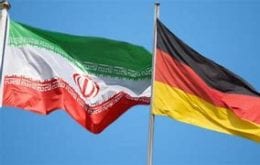Payvand.com – On September 15, 2018, for the first time in the United States, the Smithsonian Institution celebrated the history of the ancient capital of Persia Ctesiphon (Tisfun). Located on the eastern bank of the Tigris River near present-day Baghdad, Ctesiphon served as a royal capital of the Persian Empire in the Parthian and Sasanian eras for over eight hundred years.
The city’s most iconic structure was the Taq Kasra (Arch of Khosrow), one of the wonders of the ancient world which was built by the Sasanian rulers. The palace was neglected after the Arab invasion of Persia in the 7th century AD.
The focus of the event at Smithsonian Institution’s Freer Galley of Art was the first-ever documentary film on the site “Taq Kasra: Wonder of Architecture” by Pejman Akbarzadeh.
The film explores the history and heritage of this iconic monument which is the world’s largest brick vault. Taq Kasra was in serious danger of ISIS attacks in 2015-2016 and this was the main motivation for documentary maker Pejman Akbarzadeh, based in Holland, to travel to Iraq twice and film the arch before it was potentially destroyed. Touraj Daryaee, Matthew Canepa, Katharyn Hanson, and Richard Kurin presented lectures before and after the screening discussing Ctesiphon and Taq Kasra’s importance and its recent preservation efforts.

Pejman Akbarzadeh,
Director of the first-ever documentary film on Taq Kisra
The Freer Gallery of Art in Washington DC holds the largest collection of Sasanian-era Persian artefacts in the entire United States. The Ctesiphon Day at the gallery was attended by near 200 people.

Matthew Canepa, Professor at the UC Irvine’s Center for Persian Studies,
Ctesiphon Day, September 15, 2018.
SEE ALSO:
– BBC: Taq-e Kisra World Premiere in London (+ Video)
– No One Knows About the Iraqi Museum’s Persian Collection (+ Video)
 Shabtabnews In this dark night, I have lost my way – Arise from a corner, oh you the star of guidance.
Shabtabnews In this dark night, I have lost my way – Arise from a corner, oh you the star of guidance.


